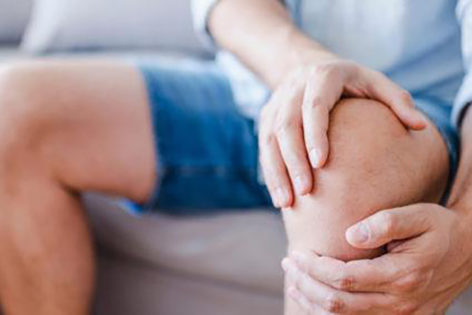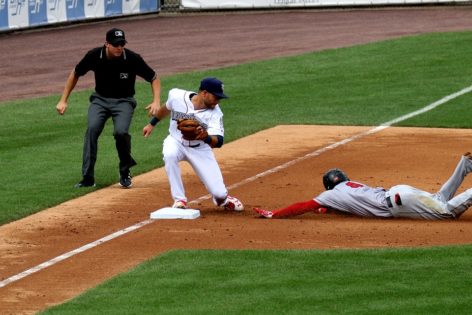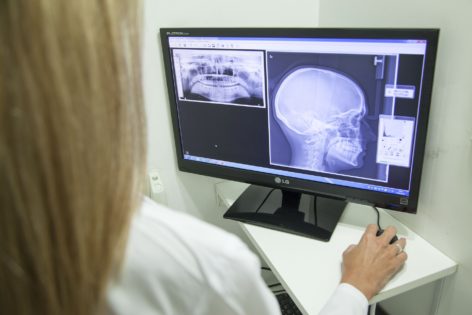
Stem Cells safe and effective in treatment for arthritis of the knee
26/04/2019


Osteoporosis affects over three million people in the UK

More than 500,000 people receive hospital treatment for fragility fractures in the UK

The annual cost to the NHS for treatment of fragility fractures is £4 billion

More joint replacements were carried out in the UK than ever before in 2017

Knee injuries are the most common sports injuries seen in emergency departments
Source: Health and Social Care Information Centre, NHS England
Osteporosis is a condition that causes bones to become weak, fragile and more likely to break.
Affecting more than 3 million people in the UK, the most common injuries casued by Osteoporosis are; wrist fractures, hip fractures and fractures of the spinal bones – according to the NHS. Some people can lose bone density much faster than as part of the normal ageing process, leading to developing the condition.
There are other factors that can increase the risk of developing the condition:
Whilst it is difficult to put a precise number on the impact of sports injuries it is possible to identify some of the key indicators.
We know, for example, that sports injuries accounted for roughly 2% of all cases seen in emergency departments in 2017, according to data from the Health and Social Care Information Centre,* which means that on average around 380,000 cases are treated annually.
NHS Digital confirms that just over half of all A&E attendances for sports injuries involved young men aged 10 to 29 (205,500) and that this tends to peak on Saturday afternoons between 3pm and 5pm; and Sundays between 11am and 4pm. With the knee as the most common joint to be injured in sporting accidents. Specifically, meniscal tears, (tears in the cartilage) account for about 11% of knee injuries, while ligament injuries occur in about 40% of all knee injuries. Amongst all knee ligament injuries the anterior cruciate ligament is most commonly injured (49%) and medial collateral ligament injury comprises 29% of these injuries.
Though it is important to understand that the knee isn’t the only area affected by sports injuries, many areas of the body can be affected by either sudden or gradual damage (trauma) to the musculoskeletal system. This can include damage to muscles, bones, ligaments (the thick bands of tissue that connect one bone to another.), tendons (the tough, rubbery cords that link muscles to bones, Joints, including the hips, elbows, ankles and knees and cartilage(tough, flexible tissue that covers the surface of joints and allows bones to slide over one another).
Research into Stem Cell Treatment for Bone, Cartilage and Sports Injury Repair
Fortunately bone, cartilage and sports injury repair are one of the most rapidly developing areas of adult stem cell investigations, with stem cells being investigated to speed healing, reduce scarring/fibrosis, and heal structures that previously could not be healed as well as relieving pain.
Some investigations are determining if stem cells speed healing and recovery. These include:
Others are investigating the ability of stem cells to promote recovery in areas that historically heal poorly or not at all. These include:
The British Journal of Sports Medicine has confirmed in a recent article that stem cell technology may be useful in the treatment of tendon and ligament injuries, and while further work is still required given the success of these approaches in treating race horses many experts see this as a way forward for human treatments.
Protecting Against Potential Future Health Issues
The best stem cells are young stem cells, before they can deteriorate through age of pollution. That’s why it’s advisable to bank stem cells whilst they are in their prime, at the best they will ever be – at the youngest age possible.
As children naturally lose around 12 teeth over a five-year period, the process of obtaining viable stem cells for future treatment for bone, cartilage and injury repair is non-invasive. It’s also the most cost effective way to ensure cells are banked and ready for when they may need to be used in the future.
If you want more information on how you could bank your children’s baby teeth for potential future therapeutic use, have a chat to one of our team or download our guide to stem cell banking.
To keep up to date with the latest developments in stem cell therapy and the treatment of bone, cartilage and sports injuries, make sure to check back regularly to our blog.

26/04/2019

29/03/2018

27/03/2018
18/10/2017